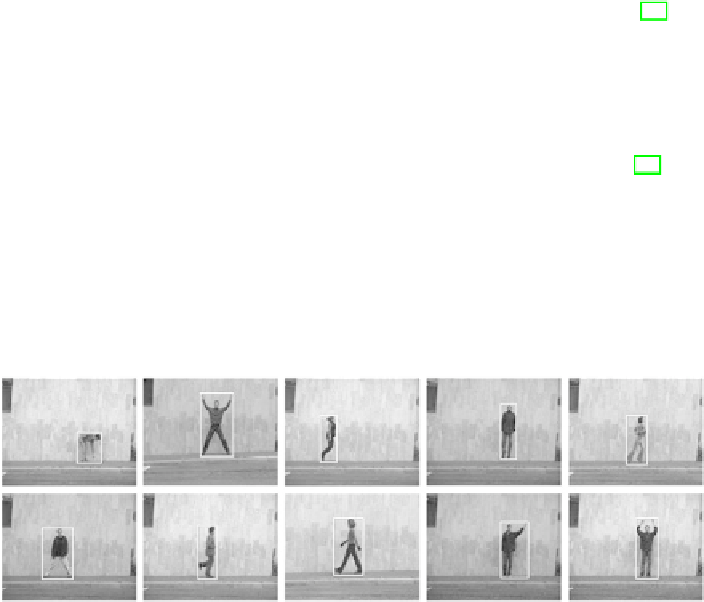Information Technology Reference
In-Depth Information
The parameters used for the MAPF system are the same than in [16]. The
parameters used for the SVM classifier were the result of exhaustive search over
the parameter space using grid-search and cross-validation. Grid-search provides
an exhaustive parameter search and the computational time required is low
because there are only two parameters. Furthermore grid-search can be easily
parallelized.
Experimental analysis is carried out on a dataset provided by [11]. This
dataset consists of 9 subjects performing a set of 10 different actions (see
Figure 3):
bending down, jumping jack, jumping, jumping in place, running,
galloping sideways, hop-skip, walking, waving one hand and waving both hands
.
Experiments were performed using 9 fold cross-validation over 90 samples: 8
subjects are used for training and the remaining one for testing; this procedure
is repeated for every permutation and results are finally averaged.
Fig. 3.
Action database: examples of sequences corresponding to different types of
actions
The tracking of the subjects was made using MAPF in order to achieve real
time performance. MAPF is a very fast algorithm and is able to obtain high
framerates even tracking a variable number of objects. In our case only one
subject is being tracked. For this special case MAPF obtains 98.82
fps
.Results
for a variable number of objects can be found in [16].
The output of the MAPF tracking system is then processed to get the feature
descriptors and they are finally sent to the classifier. SVM with a radial basis
function kernel was used as classification method. The first performed step is
data scaling, the main advantage of scaling is to avoid attributes in greater
numeric ranges dominating those in smaller numeric ranges and some numerical
diculties present when using kernel because kernel values usually depend on the
inner products of feature vectors. Scaling constants are calculated with training
data and saved in order to use the same values with test data. In our case the
range [
1
,
+1] is used.
Classification results are shown in Table 3. in Table 3. The proposed method
achieved an accuracy of 90.32% in average. Table 4 compares the results obtained
for our approach with other relevant works in the literature: Zhou et al. [4] and
Ali et al. [9]. As it can be seen, the three approaches obtain similar accuracy
−






Search WWH ::

Custom Search